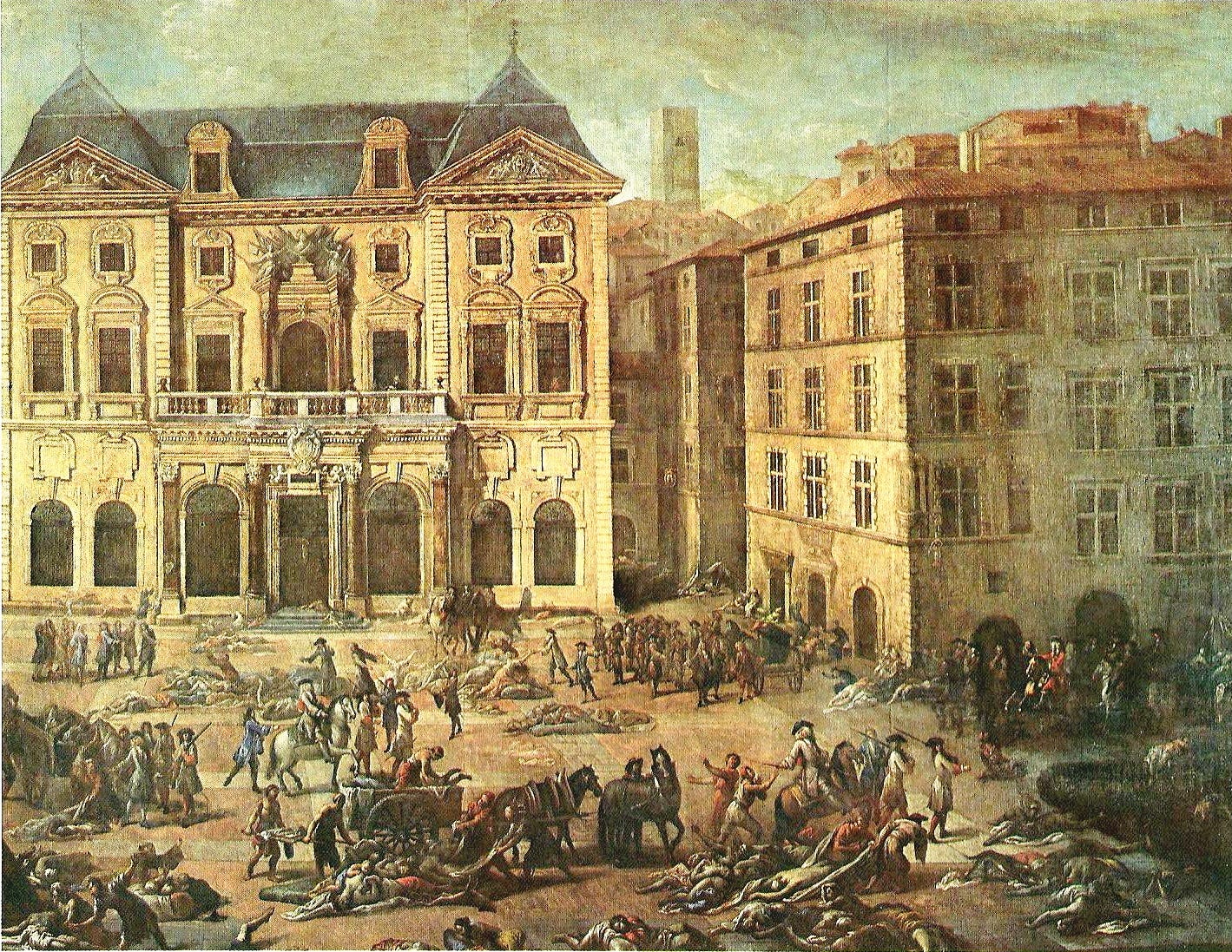
This post is adapted from an extended research paper I wrote as a history major at Princeton University. Part I came out in July. A free preview is available to all subscribers. If you want to read more, please consider a paid subscription.
Mysterious deaths aboard Le Grand Sainte Antoine
Four months before the Grand Saint Antoine arrived at Marseilles on May 25, 1720, it had departed Seyde (contemporary Sidon) on January 30th. Later, it was discovered that plague broke out in Seyde not long after the ship’s departure. With the infection in Seyde, it was possible the ship picked up merchandise infested with infected rats, fleas and/or lice. But the plot thickened, because at a stop in Tripoli on April 3rd, the ship picked up Turkish passengers with clean bills of health, one of whom fell ill and died on the night of April 5th. During efforts to dispose the body, two sailors touched the corpse. The pair fell ill and died on April 27 and 28. After that, two more sailors, as well as the ship’s physician, fell ill and died suddenly by May 4th and May 6th.
Alarmed, Captain Chataud isolated himself, and set sail for the Italian port city of Livorno. Refused entry at the port of Livorno on May 17th, three more sailors fell ill and died suddenly after they were dropped off at the Livorno lazaretto, subsequently diagnosed with “malignant and pestilential fever,” which, for the record, is not strictly a diagnosis of plague. A week later, the ship arrived in Marseille.
Did the plague come from Seyde, or from the Turkish passenger? Nine weeks had passed before the Turkish passenger boarded the vessel. This made it unlikely that an ill member of the crew could have infected the Turkish passenger, considering that no crewmembers were sick before he boarded. Being bitten by a bubonic plague-infected flea from the possibly infested ship’s cargo would not have killed him within three days. Absent of these options, he could have died of just about anything.
Scott and Duncan believe the Turkish passenger was the vector of the plague, considering that the crew did not become ill on the long voyage from Syria. But plague was confirmed in Syria after they departed, and nothing suggests Tripoli was infected at the time they left. Moreover, the sailors who touched the Turkish passenger’s corpse died 22 days after the fact. Physical contact with infectious bodily fluids is consistent with hemorrhagic fevers, but also septicemic plague, or pneumonic plague if droplets of Y. Pestis are inhaled, but all of these possibilities exceed the time period that would be consistent with contracting one of these pathogens and death. If someone caught a viral hemorrhagic fever, they would know relatively quickly, because they would probably die soon after; the same was true of pneumonic plague. Bubonic plague could take more time to declare itself; incubation ranged from one to eight days.
Under the condition that there was infested merchandise, either from the Turkish passenger or Syria, then a parasite living in the merchandise or on rodents near the merchandise could have infected the pair of sailors. It was less obvious a solution than the infection and death of two people because of contact with inflected body fluids, but just as feasible when one considered the evidence in the following sections.
Scarcely a week had passed before two more sailors and the ship’s doctor died, and it was practically certain that the ship’s doctor came into close contact with the sick sailors, at which point the doctor could have been infected by one of the ill, or alternately, a parasite living on the victim’s body. The next set of deaths was ten days after that, at which point anyone could have been infected at any time. This timeline between illnesses would be consistent with bubonic plague for the doctor’s case, since he would have treated the first set of sailors and then became ill ten days later. There was not enough evidence to say for certain if infected merchandise was the cause at this stage of the chronology—we leave that for geospatial analysis of the spread in town, which makes the case much more clear.
What we do know from this point is that the plague was spread from either Seyde, where plague was reported, or less likely, the Turkish passenger and his merchandise from Tripoli; the plague was possibly spread by close contact with the victims; and that on approximately ten day intervals after the first crewmen died, a new set of crewmen were killed. The events that followed during the quarantine complicated this narrative.


